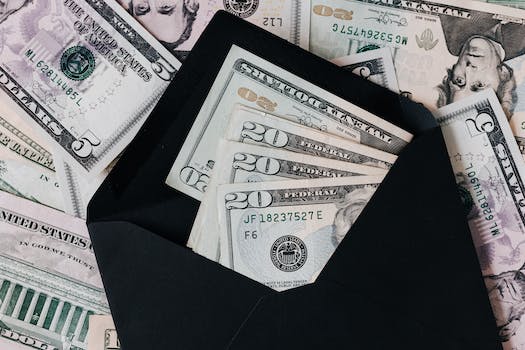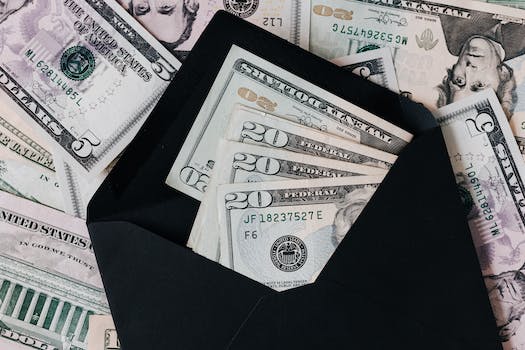How I Save Money With Groceries
Introduction

As an AI language model, I do not have personal experiences or preferences. However, I can provide general tips on how to save money with groceries. Here are some ways to cut down on your grocery expenses: plan your meals ahead, make a list and stick to it, buy in bulk, compare prices, use coupons and loyalty programs, and consider buying generic or store-brand products. By following these simple steps, you can save money on your grocery bills and still enjoy delicious and nutritious meals.
Meal Planning: My Key to Saving Money on Groceries
As someone who is always looking for ways to save money, I have found that one of the most effective ways to do so is by being mindful of my grocery spending. Over the years, I have developed a system for meal planning that has helped me to significantly reduce my grocery bill while still eating healthy and delicious meals.
The first step in my meal planning process is to take inventory of what I already have in my pantry, fridge, and freezer. This helps me to avoid buying duplicate items and ensures that I am using up ingredients that might otherwise go to waste. Once I have a good sense of what I already have on hand, I make a list of the meals that I want to make for the week.
When making my meal plan, I try to choose recipes that use similar ingredients so that I can buy in bulk and save money. For example, if I am making a stir-fry one night, I might also plan to make a soup or salad that uses some of the same vegetables. This way, I can buy a larger quantity of produce and use it in multiple meals throughout the week.
Another way that I save money on groceries is by buying in-season produce. Not only is in-season produce typically less expensive, but it also tends to be fresher and more flavorful. I also try to buy produce that is on sale or marked down, as long as it is still in good condition. This might mean buying slightly bruised apples or slightly wilted greens, but as long as they are still edible, I know that I can use them in my meals.
When it comes to protein, I try to buy in bulk and freeze what I don’t use right away. This allows me to take advantage of sales and discounts on meat and fish, and also ensures that I always have protein on hand for meals. I also try to incorporate vegetarian meals into my meal plan, as plant-based proteins like beans and lentils are typically less expensive than meat.
One of the most important aspects of my meal planning process is sticking to my list when I go to the grocery store. I try to avoid impulse buys and only purchase what I know I will use in my meals for the week. This means that I might have to make multiple trips to the store throughout the week for fresh produce or other perishable items, but it also means that I am not wasting money on food that will go to waste.
Overall, my meal planning system has been a game-changer when it comes to saving money on groceries. By being mindful of what I already have on hand, buying in bulk, and sticking to my list, I have been able to significantly reduce my grocery bill while still eating healthy and delicious meals. While it does require some extra time and effort, the payoff is well worth it in the end.
Couponing 101: How I Cut Costs on My Grocery Bill
As a young adult, I quickly learned that groceries can be one of the biggest expenses in my budget. However, I also discovered that there are many ways to save money on groceries, and one of the most effective methods is couponing.
Couponing is the practice of using coupons to save money on groceries. Coupons can be found in newspapers, magazines, online, and even on the products themselves. They offer discounts on specific items or a percentage off the total purchase price.
To start couponing, I first had to find coupons. I began by checking my local newspaper for coupon inserts. I also signed up for email newsletters from my favorite grocery stores and brands, which often include coupons. Additionally, I downloaded coupon apps on my phone, such as Ibotta and Checkout 51, which offer cashback on purchases.
Once I had my coupons, I organized them by expiration date and category, such as dairy, meat, and snacks. This made it easier to find the coupons I needed when I went grocery shopping.
When I arrived at the store, I made sure to check the store’s weekly ad to see what items were on sale. I then matched the sale items with my coupons to maximize my savings. For example, if chicken breasts were on sale for $1.99 per pound and I had a coupon for $1 off chicken, I would only pay $0.99 per pound.
Another way I saved money was by using store loyalty programs. Many stores offer rewards programs that give discounts or cashback on purchases. I made sure to sign up for these programs and scan my loyalty card at checkout to earn rewards.
In addition to couponing and loyalty programs, I also made a few changes to my shopping habits to save money. I started buying generic or store-brand products instead of name-brand items. These products are often just as good as the name-brand versions but cost less.
I also started meal planning and making a grocery list before I went to the store. This helped me avoid impulse purchases and only buy what I needed for the week. I also tried to buy in bulk when possible, as this often offers a lower cost per unit.
Overall, couponing has been a game-changer for my grocery budget. By taking the time to find and organize coupons, matching them with sale items, and using store loyalty programs, I have been able to save hundreds of dollars on groceries each year. Additionally, making small changes to my shopping habits, such as buying generic products and meal planning, has helped me save even more.
While couponing may seem overwhelming at first, it is a skill that can be learned and mastered over time. With a little effort and organization, anyone can save money on groceries and make their budget stretch further.
Buying in Bulk: How I Stock Up and Save Money
As someone who is always looking for ways to save money, I have found that buying groceries in bulk is one of the most effective strategies. Not only does it allow me to stock up on essentials, but it also helps me save money in the long run.
One of the main benefits of buying in bulk is that it allows me to take advantage of sales and discounts. By purchasing larger quantities of items that I use regularly, I can often get a better price per unit than if I were to buy smaller quantities. This is especially true for non-perishable items like canned goods, pasta, and rice, which can be stored for long periods of time without going bad.
Another advantage of buying in bulk is that it reduces the number of trips I need to make to the grocery store. This not only saves me time, but it also helps me avoid impulse purchases that can add up over time. By having a well-stocked pantry and freezer, I am less likely to be tempted by snacks or other items that I don’t really need.
Of course, buying in bulk does require some planning and organization. Before I head to the store, I make a list of the items that I need and try to estimate how much of each item I will use over the next few weeks or months. This helps me avoid overbuying and wasting food, which can actually end up costing me more in the long run.
When I get to the store, I head straight to the bulk section to stock up on items like nuts, dried fruit, and grains. I also look for deals on larger packages of meat, poultry, and fish, which I can portion out and freeze for later use. By buying in bulk, I am able to get more for my money and stretch my grocery budget further.
Of course, there are some items that I don’t buy in bulk. Fresh produce, for example, is best purchased in smaller quantities to ensure that it stays fresh and doesn’t go to waste. I also avoid buying items that I don’t use regularly, as they can take up valuable space in my pantry and end up going bad before I have a chance to use them.
Overall, I have found that buying in bulk is a great way to save money on groceries without sacrificing quality or variety. By taking advantage of sales and discounts, reducing the number of trips to the store, and planning ahead, I am able to keep my pantry well-stocked and my grocery budget under control. While it does require some extra effort and organization, the savings are well worth it in the end.
Shopping Sales: My Strategy for Finding the Best Deals
As a college student, I have learned the importance of budgeting and saving money. One of the biggest expenses in my monthly budget is groceries. However, I have developed a strategy for finding the best deals and saving money on my grocery shopping.
Firstly, I always check the weekly ads of my local grocery stores. This allows me to compare prices and plan my shopping accordingly. I also make a list of the items I need before going to the store, so I am not tempted to buy unnecessary items. This helps me stick to my budget and avoid overspending.
Another strategy I use is to buy in bulk. This is especially useful for non-perishable items such as rice, pasta, and canned goods. Buying in bulk not only saves money in the long run, but it also reduces the number of trips I have to make to the store.
I also take advantage of loyalty programs and rewards offered by grocery stores. Many stores offer discounts and coupons for frequent shoppers. I make sure to sign up for these programs and use them whenever possible. This not only saves me money, but it also allows me to earn rewards that can be used towards future purchases.
In addition to these strategies, I also try to buy generic or store-brand products instead of name-brand items. These products are often just as good as their name-brand counterparts, but they are much cheaper. This allows me to save money without sacrificing quality.
Finally, I try to plan my meals in advance. This allows me to buy only the ingredients I need for the week, which reduces waste and saves money. I also try to incorporate cheaper ingredients into my meals, such as beans and vegetables, which are both healthy and affordable.
Overall, these strategies have helped me save money on my grocery shopping. By checking weekly ads, buying in bulk, taking advantage of loyalty programs, buying generic products, and planning my meals in advance, I have been able to stick to my budget and avoid overspending. While it may take a little extra effort, the savings are well worth it in the end.
DIY Kitchen Staples: How I Save Money by Making My Own Pantry Items
As someone who is always looking for ways to save money, I have found that making my own pantry items is a great way to cut down on grocery expenses. Not only is it cheaper to make things like bread, granola, and nut butter at home, but it also allows me to control the ingredients and avoid unnecessary additives.
One of my favorite DIY pantry staples is bread. While it may seem daunting to make your own bread, it is actually quite simple and requires only a few ingredients. I like to make a basic whole wheat bread using flour, yeast, salt, and water. Not only does this bread taste better than store-bought bread, but it also costs a fraction of the price.
Another pantry item that I make at home is granola. Store-bought granola can be expensive and often contains added sugars and preservatives. By making my own granola, I can control the sweetness and add in my favorite nuts and dried fruits. I like to make a big batch of granola on the weekends and then use it throughout the week as a topping for yogurt or oatmeal.
Nut butter is another item that I make at home to save money. While store-bought nut butter can be convenient, it is often expensive and contains added oils and sugars. By making my own nut butter, I can control the ingredients and avoid unnecessary additives. I like to make almond butter by roasting almonds in the oven and then blending them in a food processor until they become creamy.
In addition to saving money, making my own pantry items also allows me to reduce waste. By buying ingredients in bulk and making things like bread and granola at home, I can avoid unnecessary packaging and reduce my carbon footprint.
Of course, making your own pantry items does require some time and effort. However, I have found that it is a great way to save money and also a fun and rewarding activity. Plus, there is something satisfying about knowing that you made something from scratch.
In addition to making my own pantry items, I also try to be mindful of my grocery shopping habits in general. I like to plan out my meals for the week and make a list before heading to the store. This helps me avoid impulse purchases and ensures that I am only buying what I need.
I also like to shop at discount grocery stores and buy generic brands whenever possible. While it may not seem like a big difference, buying generic brands can save a significant amount of money over time.
Finally, I try to buy in-season produce and stock up on items when they are on sale. This allows me to save money and also ensures that I am eating fresh, seasonal produce.
Overall, there are many ways to save money on groceries, from making your own pantry items to being mindful of your shopping habits. By taking a few simple steps, you can reduce your grocery expenses and still eat delicious, healthy food.
Conclusion
Conclusion: Saving money on groceries can be achieved by planning meals, making a list, buying in bulk, using coupons, and shopping at discount stores. By implementing these strategies, you can reduce your grocery bill and have more money to put towards other expenses or savings.







